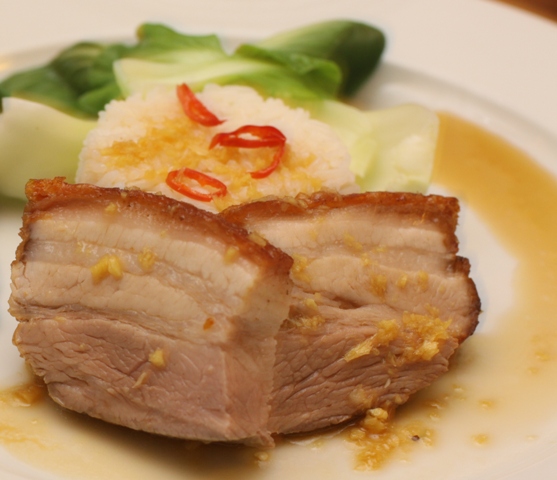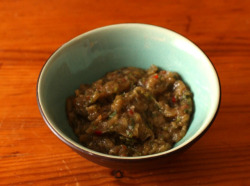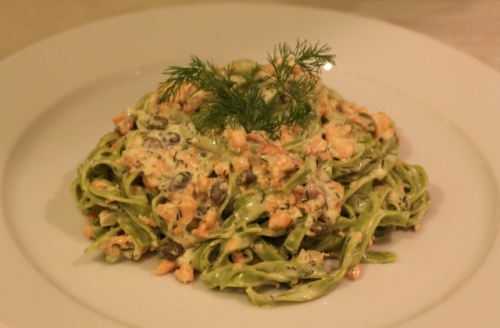Chinese crisp-roasted pork belly with soy and ginger dressing
 Thursday, November 18, 2010 at 9:42PM
Thursday, November 18, 2010 at 9:42PM WOWEEEEEEEEEEEEEEEEEEEEEEEEEEEEEEEEEEEEEEEEEEEE! This was good.

On Monday I promised to share the recipe for the crispy pork belly that went down so well with the smoky eggplant and chilli relish. Those of you who read that post might be surprised that the relish is not included in the title. My dinner guest, Katy, may beg to differ (she was rather taken by the relish), but I think the recipe has enough going for it as a standalone dish. Of course the relish made it all the more special, but it would have been pretty damn fine without it.
The recipe for the pork is another from Stephanie Alexander’s trusty tome, The Cook’s Companion. I had made crispy roast pork belly in the past, but was looking for an Asian twist. Alexander’s method is much the same as my own, except that she boils the pork belly for two minutes before marinating and salting it. I am not sure why this helps, but it seems to work wonders for the crackling, which was the crispiest I have ever achieved. As my colleague Thomasin said when I told her about it, “If I'm going to eat fatty pork (which is one of life's greatest pleasures), I want a nice crisp skin on it.” Agreed.
 Vix |
Vix |  17 Comments |
17 Comments | 


